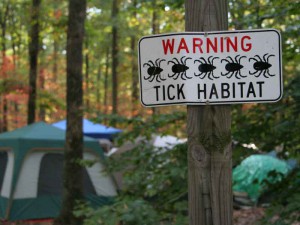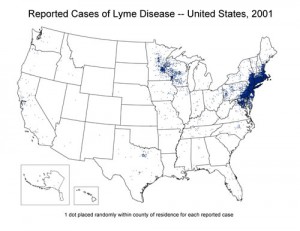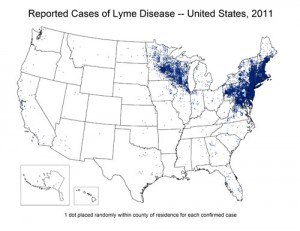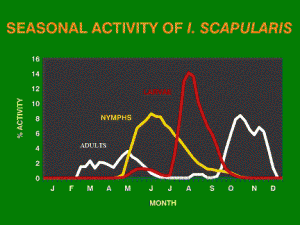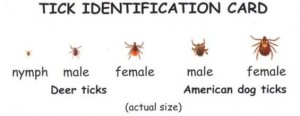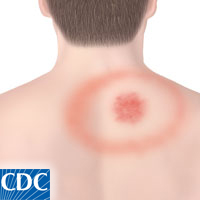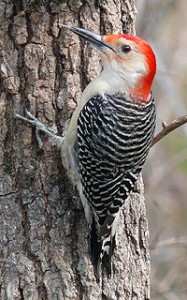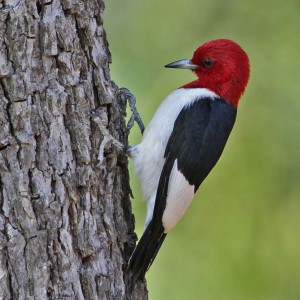Road running is like a peanut butter and jelly sandwich. There’s nothing particularly thrilling or unexpected. But it’s a comfort food, and sometimes it just hits the spot.
Lately I’ve been stretching myself athletically in ways I haven’t since way back when I was a kid. It’s been exciting, learning new sports like swimming and mountain biking, getting back into skiing, running my first 50 miler at Bull Run.
But it’s all been a very humbling experience. I’ve had to learn how to get passed. How to half-drown and gasp in the pool as I try to thrash across 25 meters. How to miserably watch all the perky ponytails go by as I sit barfy and queasy in a chair mid-Bull Run. Aaron likes to mention how I’m the only person he’s ever seen get off a bike to go down a hill.
Ultra running has kind of bludgeoned a part of my self-image. Since I moved to DC in 2008 I’ve raced the road marathon distance seven times, each time within a mere four-minute window, between 2:55 – 2:59, always managing to slip under the three hour barrier. I’ve run injured, I’ve run sick, I’ve had stomach problems, I’ve pooped in the woods midway, I’ve been overtrained, undertrained – but I can always churn it out over those short distances. I’m similarly consistent at the 5k (all under 18min), 8k (under 30min) and 10k (under 38min) distances.
I remember chatting with Ragan after one of the Women’s Half Marathons, and she admitted she was hoping I’d blow up in the second half. I recall being somewhat stunned. Me? Blow up? I’m 4-for-4 at the Women’s Half Marathon from 2009-2013. And then I realized that Ragan knew me not from road racing, but from the ultra races. Of course she figured I’d blow.
Because when I venture past the 26 mile mark, my race turns into a game of roulette. At one end, I could have smooth sailing like at Highland Sky last year. But problems that I can tough out over short distances take a much larger compounding toll over longer distances, and at the other end I could have Holiday Lake, Willis River, and Bull Run.
It’s eaten at my heart that I can’t be a rock-hard competitor at the ultra distances, that I can’t count on giving an expected showing. Maybe others learned this a long time ago (I think Aaron’s way ahead of me on this one), but I’m just beginning to settle on the idea that it’s somewhat pointless to compete with intention at all at ultra distances — you just have to accept however the roulette happens to spin that day. It’s not in my nature, I *love* competitive sports, and turning down that nozzle is hard. But I’m beginning to accept that you can’t approach an ultra the same way you can approach a shorter race, with expectations. You can’t will performance. At least not at my low level of ultra experience.
So after a six month road running drought, there was something cathartic about getting to churn out a good old fashioned road marathon, to know exactly what’s gonna hit me and how to take the punches, to win and take the prize. And even if it’s roasting hot, and even if my foot hurts, and even if my stomach sours and I have to scratch some leaves in the middle, I know exactly how to gut it out.
~ ~ ~ ~
‘So, are you planning to run the Boston Marathon next year?’ Aaron asked as we bumped along in our Jeep through eastern West Virginia.
‘Yeah, I gotta. That’s 2015.’ (I’m on a three-year Boston plan: 2006, 2009, 2012….)
‘So, what are you going to run as a qualifier?’
‘Oh, crap!’ I responded, and nodded off again. I had woken up at 4am that day, flown from Managua, Nicaragua, to Houston to DCA, gotten home that evening for just long enough to throw all my dirty clothes in a trash bag, and headed off to Canaan, WV with our cat Leda.
The problem with Boston registration occurring in September is that there are basically no marathons in the DC area in the months leading up to it to run as a qualifier (except an indoor marathon that’s like 200+ laps in Arlington in July). If you haven’t run a fall or spring marathon, you’re pretty much screwed. But we had run the Delaware Marathon last year (the last time I needed a last-minute BQ — although I later changed my mind and opted for Bull Run instead), and it was a pretty nice and convenient little race. The $500 purse I won for 2nd place last year didn’t hurt either.
But we had big plans for the weekend in Canaan, so no way were we going to sacrifice those to taper. After a Saturday running through the Sodds, we upped the ante on Sunday and hopped onto some rented mountain bikes and headed into the Canaan wilds. Now, a year ago you would never have found me on a bike or in a pool. I had long declared a bicycle to be the Vehicle of Death. In a pool I behaved much like a drowning cat in water. Have you seen those Youtubes of them dropping the lion cubs in the moat for their ‘swim test’? Yeah, that would be me. I considered triathletes to be a separate species. But Aaron is a sneeeeeaky bear, and he has been chipping away at these steadfast positions. He got a big boost last fall when my fibroma was diagnosed and I had to find other ways to stay off my feet.
It was only my third time biking as an adult. Aaron had told me that we were going to be biking on a ‘gravel road’. I reminded him of that description when I found myself (a) biking hub-deep through lake-puddles, (b) getting flung over my handlebars when my bike sunk hub-deep into mud, (c) navigating steep rock chutes, and (d) biking up 1800 ft over a 4-mile climb. But I LOVED it. My butt bits were in a pretty sorry state after three hours of hard bouncing. But my fibroma has sadly impaired my ability to run rocks, so it was a thrill to get to go mad-adventuring again. In some ways, mountain biking reminds me of horse riding — well, a bit more like bronco riding, but I’ll take what I can get.
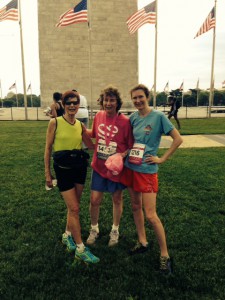
On Saturday we kept up tradition by running the Race for the Cure with my mom and Aaron’s mom. R4C is my mom’s one big race of the year, and she rocked it once again in 41 minutes. Aaron’s mom won her age group in ~29 minutes. After Mother’s Day brunch with the moms at Old Ebbitt Grill, we skeetered off to Wilmington. After our bulletproof-glass-registration-desk-nestled-between-two-strip-clubs disaster of a hotel last year, we treated ourselves to the Westin this year. Best decision ever.
My foot was still hurting (I’ve now developed a second fibroma, about a cm towards the heel from the first one on the same foot), so there was a lot of uncertainty about how my race would go. I opted to wear my Montrails to try to give the fibroma maximum protection from the pavement. Aaron wasn’t sure how he was going to run either. I was still feeling the effects of our marathon bike adventure body wide. So we just ran together, and let two other women go a ways ahead at the start.
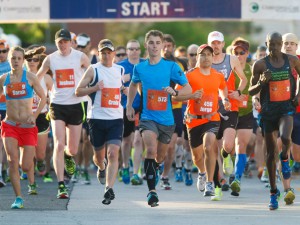
I’ve come to really appreciate the charms of the mid-sized marathon. There were about 500 people who finished the marathon, and about 3,000 total participants in the marathon-relay, half marathon, and marathon combined. The logistics are beautifully easy. It’s also fun to be able to compete for the prize purse, which at Delaware is pretty healthy given the relative strength of the competition.
I’ve also come to enjoy the mellowness of the small-city marathons. When it’s not wall-to-wall fans, it’s easier to focus on the few energetic folks — the guy strumming Bare Naked Ladies on his guitar on the King St hill, the band near mile 16, the kid with the realistic sign ‘Go Stranger, Go’. The course had good variety, starting along the river and winding up into the neighborhoods. And, critically for any marathon held in mid-May, a good part of the course was covered by the shade of trees. Despite Delaware’s reputation for ultimate flatness, the Delaware Marathon does have a significant 1-mile hill (for a road marathon) that they make us run twice (the course is two loops).
The woman in second place had dropped off the pace and I passed her on the first big hill (mile 6ish). The stretch after the hill was a long straight boulevard and I could see the first place woman up ahead. Aaron noticed that I was starting to reel her in way too quickly, and reminded me to cool it, illustrating reason #1 why it’s so much better running with Aaron.
After I took two gels my stomach turned and I desperately had to poop. I was able to hang on for a while. But when we hit the big down hill, I started to scope out escape plans. There were some poop-friendly woods off to our right that looked awfully inviting. But they were rife with poison ivy. I had to poop, but I didn’t have to poop bad enough to plunge into a grove of poison ivy. Finally I saw a little dirt trail that skeetered into the woods and I made the quick call. I’m terribly proud of how efficiently I was able to drop trou and eliminate. I really think I set a PPR (personal poop record). Definitely a time to draw on one’s trail skills.

The major trade-off of the local marathon compared to enterprises like Boston is the small hiccups in race organization. Overall, the Delaware Marathon was extremely well organized. There were mainly just minor omissions — gels weren’t delivered at the aid stations they were expected at, it was a challenge to figure out which cups were water versus Gatorade at the aid stations, etc. I started to get dizzy when the promised mile 14 gel hand-out didn’t materialize. But Aaron handed me one of his own (reason #2 why it’s so much better running with Aaron).
But there was one major snafu: the volunteer who was supposed to direct runners at a key traffic circle around the halfway point was missing, and runners were mistaking the circle for the turnaround and doubling back too early. Aaron of course knew the course and kept me headed in the right direction (reason #3 why it’s so much better running with Aaron).
At the turnaround around mile ~15 there was a chance to see where the lead women stacked up. I was about 3 minuted behind the lead woman, and about 3 minutes ahead of the 3rd place woman. An amazing Kenyan guy was running away with the men’s race. We steered as many confused runners the correct way around the traffic circle and towards the real turnaround. But some guys had turned early and the RD ended up re-calculating their times to make up for the lost 0.7 miles.
Around mile 16 you pass by the start/finish/relay transition area by the river that is teeming with people and you can’t help but pick up your pace amid all the cheers. But you turn the corner and suddenly it goes blank quiet, you’re running under a grimy underpass with potholes everywhere, and it dawns on you that you have an entire second loop to go. It’s around mile 16.5, and you can’t help but start to fantasize about quitting running for the rest of your life.
‘Did you see that?’ Aaron asked me.
I was too busy wallowing in my lowliness to see much beyond my feet. ‘See what?’
‘The lead woman was sitting on the curb.’
I lifted my chin up. ‘Seriously??’
‘Yeah, she was there with the pace bike.’
‘Sweet!’ (reason #4 why it’s so much better running with Aaron)
At that point, the race was only mine to loose, and we ran a spirited but conservative second loop. The day was heating up, I wasn’t sure whether I was well-trained or not, and the woman was unlikely to catch me unless I blew up. I still was having some stomach issues, especially after consuming any gels, so I decided just to run smart and controlled. In the end was pretty darn nice to be able to finish a marathon not feeling absolutely miserable.
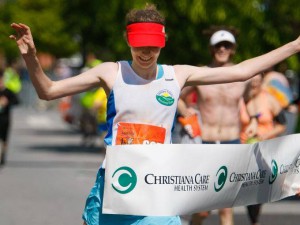
As Aaron and I were entering our final mile of the 2014 Delaware Marathon, it occurred to him that they better have a tape waiting for me to break at the finish line. Aaron has been listening to me grumble for a while about how with all the races I’ve won over my 20 years of competitive running, including a couple marathons, I have never had that little thrill of breaking the tape at the finish line. I know it’s trivial, but I’ve had it on my bucket list for a while.
We crept in just under 3 hours in 2:59. I’ve run my last six marathons within a four minute window of 2:55-2:59. It’s nice that my natural pace seems to be just under the critical 3-hour threshold– just pure lucky I suppose, as if the race was a mile longer I’d be over.
I chatted with the RD and a news reporter after the race, who ended up writing a nice little bit that included Aaron’s role keeping my race in check. The interview got cut short by my desperate need to poop, and for about an hour or so my stomach was pretty sick. But it was so much better being sick at the Westin compared to last year’s grungy little hotel where the maids were practically peeling me off the floor at check-out time. I don’t take Immodium during races, but maybe I should(?) My stomach always spasms.
As the first-place female marathon winner I won $1,000 in prize money, as well as a lifetime free entry to the event. I decided to put the winnings into the Martha Health Fund towards massages and medical care for my foot. I’ve made an appointment to see a new foot specialist in Baltimore in June, as I’m really disappointed that the problem seems to be proliferating. But if my running career gets cut short, at least I had my little moment of breaking the tape.
